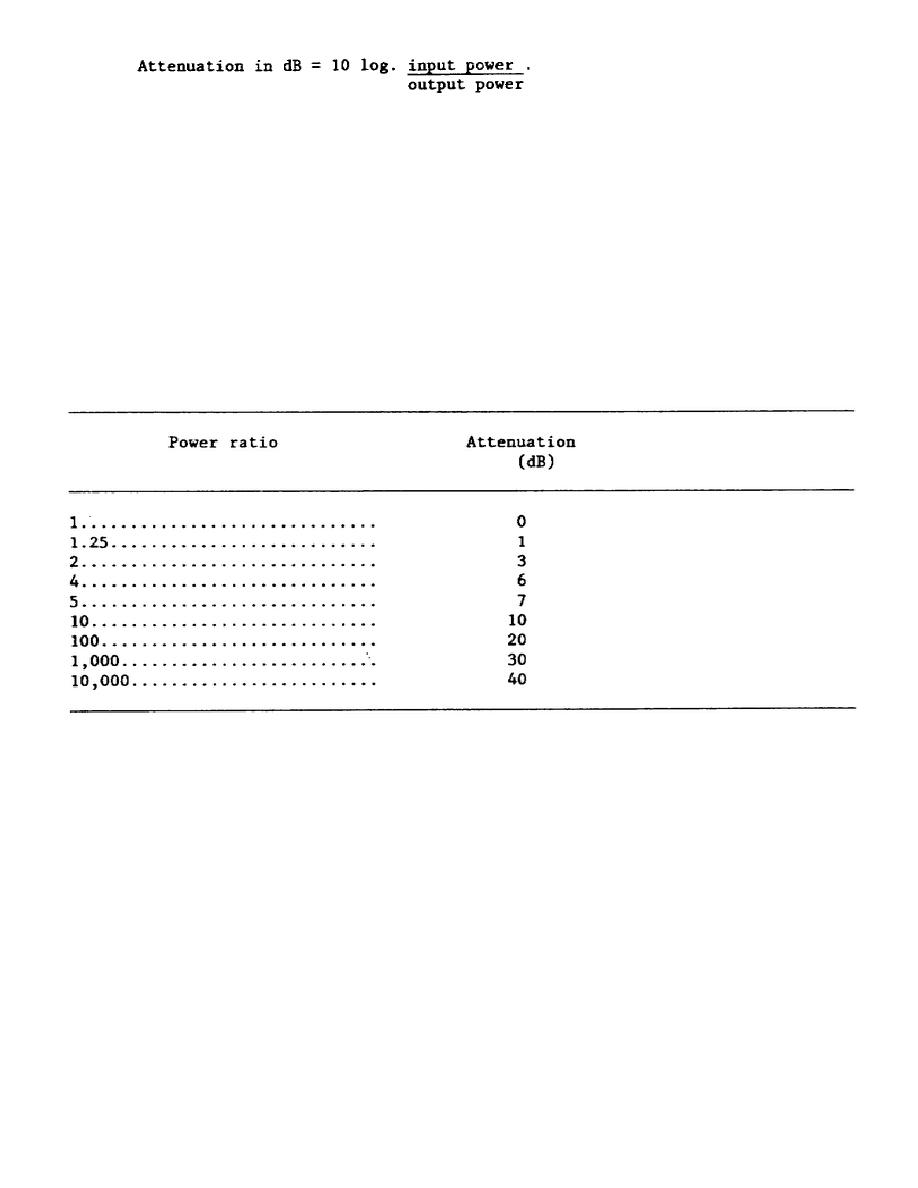
In C, figure 59, the ratio of input to output power is 60/15, or 4. The attenuation in dB therefore is 10 log 4, or 6 dB.
Similarly, in A and B, the power ratio is 57.6/5.4, or 10.67; the attenuation is therefore 10 log 10.67, or 10.28 dB.
b. DB table. In order to facilitate calculation of line loss, the attenuations in dB and the power ratios to which
they correspond are tabulated in the table below. When the power ratio is an exact power of 10, such as 100 or 1,000, the
attenuation is 10 times the number of zeros in the ratio. For example, when the ratio is 100 (two zeros), the attenuation is
10 times 2, or 20 dB. Similarly, when the ratio is 10,000 (four zeros) the attenuation is 10 times 4, or 40 dB. The
attenuation corresponding to a power ratio which is found to be a multiple of a power of 10, such as 5,000, can be found
by adding the attenuations corresponding to the multiple to the power of 10. For example, when the power ratio is 5,000,
the attenuation is found to be 7 (corresponding to the multiple 5 in the table) plus 30 (corresponding to 1,000), or 37 dB.
By using this method, the reader can verify the fact that the attenuation corresponding to a power ration of 200 is 23 dB,
and that the attenuation corresponding to a power ratio of 400 is 26 dB. When the value of the power ratio is doubled, the
attenuation is increased by 3 dB, so that if the ratio is 800, or twice 400, the attenuation is 3 dB higher than 26 dB, or 29
dB. These fundamental relations are useful in determining the attenuations of lines and networks.
129



 Previous Page
Previous Page
